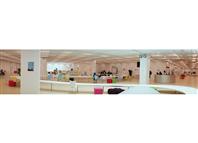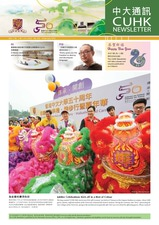In a scene from the movie Ghostbusters, Dr. Peter Venkman summoned up his courage to greet the ghost who was always immersed in a book by the library bookshelf. However, she only replied, ‘Shhh….’, gesturing for the parapsychologist to keep quiet. A library in many people’s minds, is an academic place of quiet and solemnity with an abundance of books, where people go to read alone. Even a ghost would know this and if she be of a benign disposition, follow worldly rules.
In contrast to this, the mode of study is undergoing a paradigm shift. In addition to face-to-face teaching, collaborative learning through discussion among peers to generate ideas is increasingly important. Moreover, learning materials are no longer limited to books but library e-resources accessible via tablets and notebooks. To stay abreast of the latest technological developments, a library needs to be adaptive in design and services provided.
In 2012–13, the Learning Garden on the lower ground floor of the University Library presents a new image of a library: spacious, cosy and bright. Skylight penetrates to the subterranean environment through a sheet of water as a glass ceiling is installed under the fountain of The Forum. Chairs in vibrant colours are available for students having small group discussions or studying alone.
The 2,000 sq. m. Learning Garden and the Research Commons, an area specifically designed for postgraduate students, researchers and faculty, are the two new zones established in the University Library Extension project. Together with the Learning Commons located at the Wu Ho Man Yuen Building on lower campus which is jointly managed by the Information Technology Services Centre (ITSC) and the University Library System, they make up three new ideal places for students to study on campus.
The revolutionary design of the three areas meets the needs of today’s learning modes. Common features include providing moveable tables and chairs for flexible seating, group study rooms with LED screens, and electric sockets to power up students’ portable electronic devices so they can stay connected to the Internet.
Ms. Maria Lau, senior sub-librarian of the University Library System, said, in view of the global trend of digitization of publications, the library is able to offer more space for turning into study areas. The University Library also underwent expansion to cope with the new ‘3+3+4’ curriculum. All these factors opened up an opportunity for introducing new spatial concepts and allowed the library to carry out its mission of supporting the University’s academic programmes in a brand new way.
Beginning from last November, the Learning Garden and Learning Commons are open 24 hours a day. Statistics show that during examination time, some 400 users stayed in the Garden till late at night. As for the Learning Commons, many students sat on the floor studying till midnight.
The Chinese Names
The Chinese names of the Learning Garden(進學園)and the Learning Path(博文徑)are drawn from Chinese ancient canons which denote the attitude to study of ancient Chinese scholars. Part of the Chinese name of the Learning Path comes from the motto of CUHK. The University Library staff are credited with creating these meaningful and memorable names. 


































































































































































Social Bookmarks